
Mig-21PFM

The MiG-21 jet fighter was a continuation of Soviet jet fighters, starting with the subsonic MiG-15 and MiG-17, and the supersonic MiG-19. A number of experimental Mach 2 Soviet designs were based on nose intakes with either swept-back wings, such as the Sukhoi Su-7, or tailed deltas, of which the MiG-21 would be the most successful. The MiG-21 was the first successful Soviet aircraft combining fighter and interceptor characteristics in a single aircraft. It was a lightweight fighter, achieving Mach 2 with a relatively low-powered after burning turbojet, and is thus comparable to the American Lockheed F-104 Starfighter and Northrop F-5 Freedom Fighter and the French Dassault Mirage III. the characteristic layout with the shock cone and front air intake did not see widespread use outside the USSR and finally proved to have limited development potential, mainly because of the very small space available for the radar. The MiG-21 was exported widely and continues to be used. The aircraft's simple controls, engine, weapons, and avionics were typical of Soviet-era military designs. The use of a tail with the delta wing aids stability and control at the extremes of the flight envelope, enhancing safety for lower-skilled pilots; this in turn enhanced its marketability in exports to developing countries with limited training programs and restricted pilot pools. Approximately 60 countries over four continents have flown the MiG-21, and it still serves many nations six decades after its maiden flight. It made aviation records, the most-produced supersonic jet aircraft in aviation history, the most-produced combat aircraft since the Korean War. A total of 10,645 aircraft were built in the USSR.
The Kit
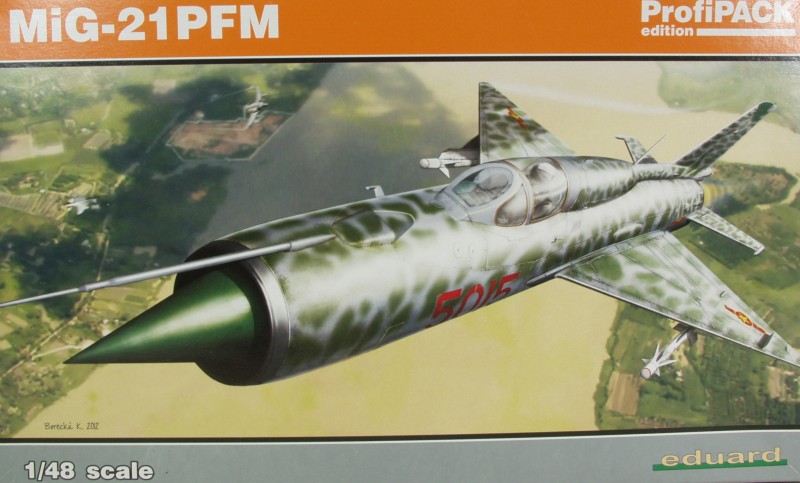
Detail wise, since this is a ProfiPack kit is does contain some photo etch both color and plain. As a result the cockpit is well appointed detail wise. The instrument panel has raised bezels with no internal detail. You have the choice of using a decal over it or applying photo etch. The ejection seat is a separate assembly and is shown being added after the fuselage halves are joined. The seat itself is built up from 14 pieces not including the belts and harnesses which are included on the color PE fret. The landing gear bays are very well detailed. The wheels are in halves with separate hubs for easier painting. The control surfaces are all separate as are the speed brakes which can be displayed open but require some cutting to do so. There is a plethora of small parts that get added to the air frame as it is covered with all sorts of bump outs, fairings and what I assume are antennas. Three different canopies are supplied depending on which marking you chose. The kit includes a good assortment of under wing and under fuselage stores including fuel tanks, rockets and missiles. a complete engine is not included and because of the nose cone nothing of the front of the engine can be seen. There is a burner can for the back with exhaust turbine blades, flame holder and tail feathers. Lets look at the parts...
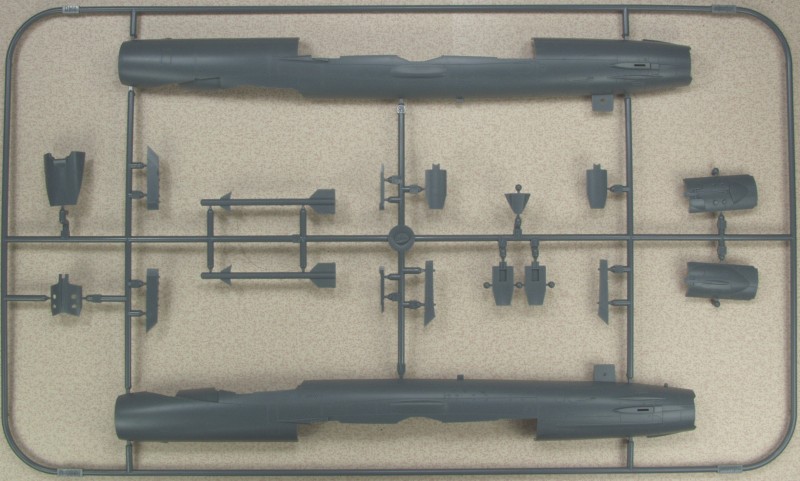
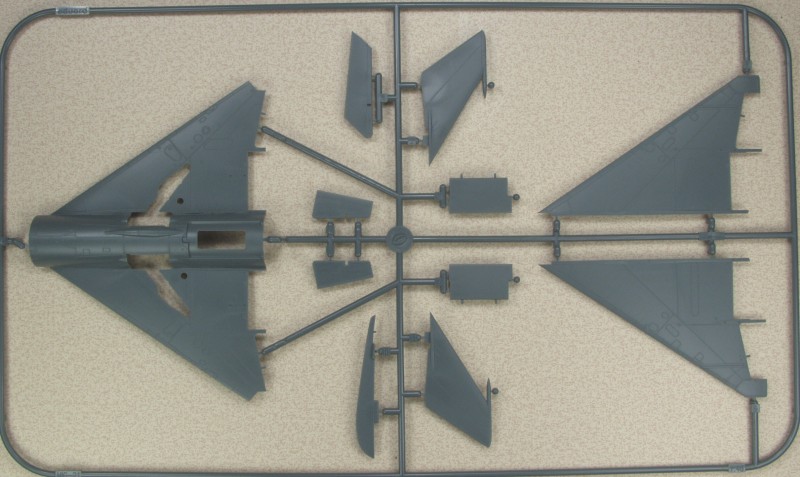
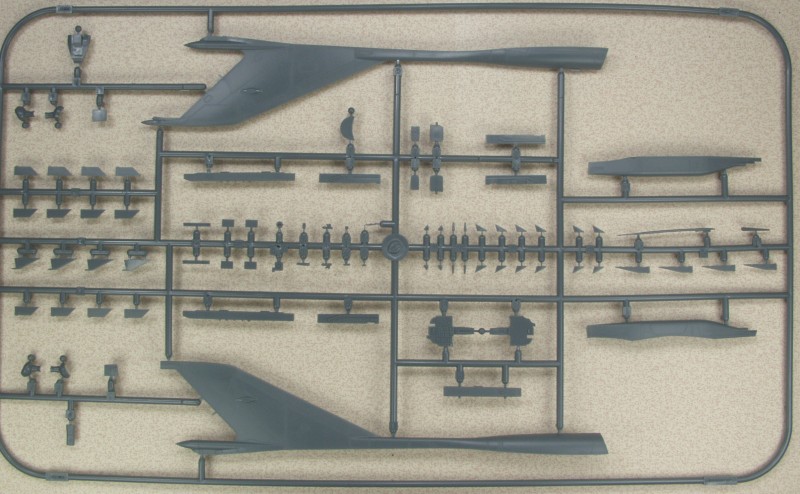
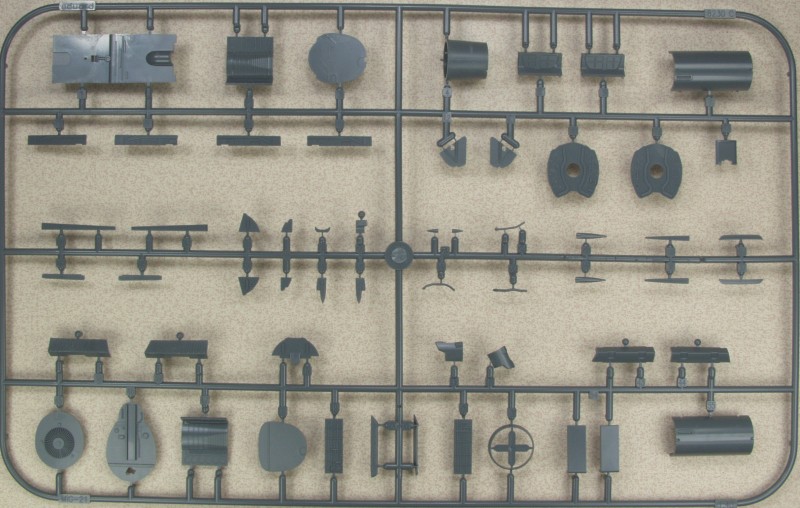
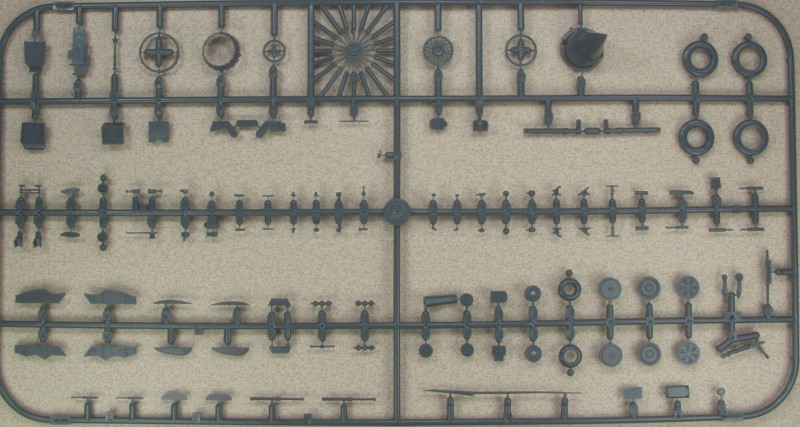
There are two of the next sprue
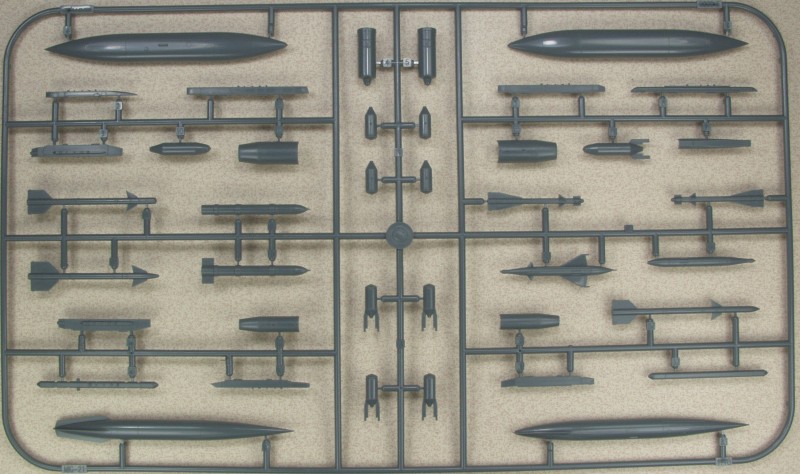
And since this is a ProfiPack there are two photo etch frets
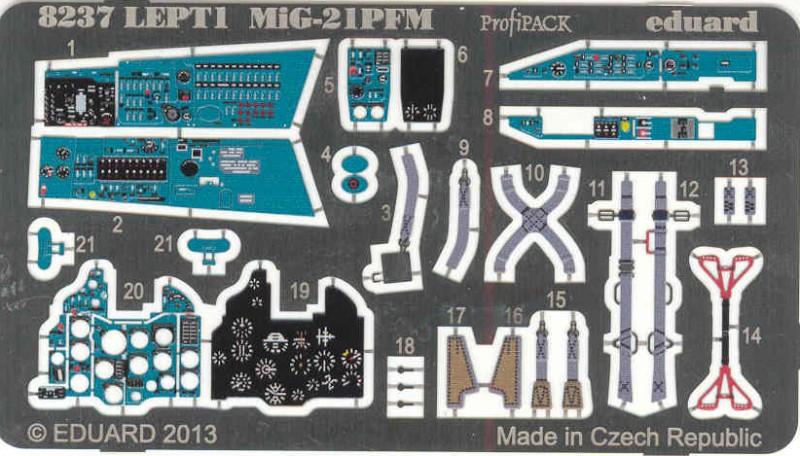
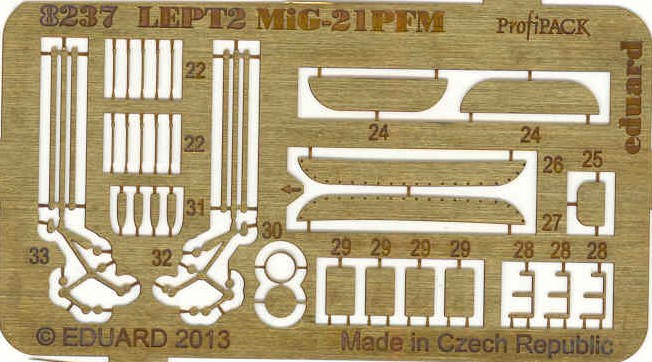
The clear parts are thin and crystal clear, some optional canopies are provided to mesh with specific markings. There is also a clear instrument panel but it not called out as being used and has an ejector pin mark on one side and tower on the other so it doesn't look useful anyway.
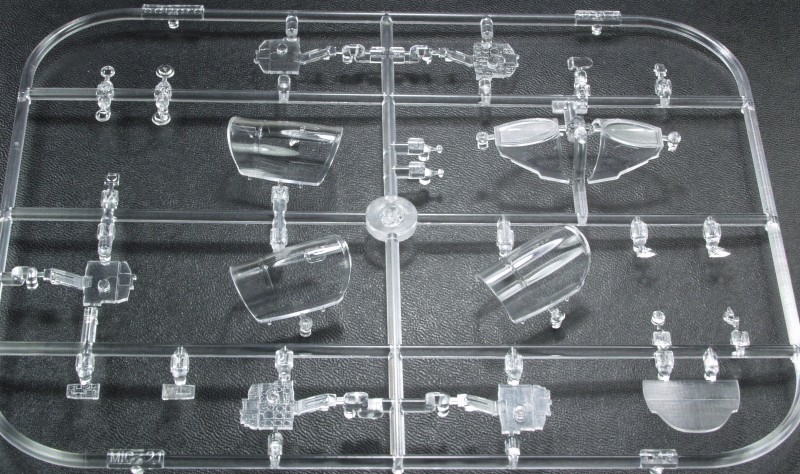
The decals are printed by Cartograph and appear to be up to their usual high standards. Marking are provided for five aircraft; Vietnamese People's Army Air Force, 921st Fighter Regiment, 1968; Czechoslovak Air Force, 11th Fighter Regiment, Zatec AFB, March 1991; Baurnal Higher Air Force School, Soviet Union, 1988; Egyptian Air Force, Inshas airbase, early 1980s; and Polish Air Force, 1st Squadron of 62nd Fighter Regiment, Poznan-Krzesiny AB, 1994.
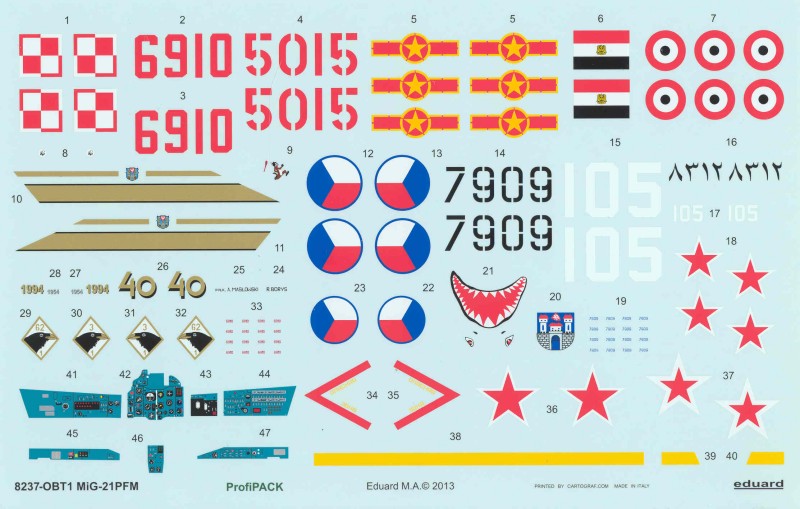
An extensive sheet of stencils is included not only for the air frame but all of the missiles and launch racks. It looks like it would take a week just to put them all on.
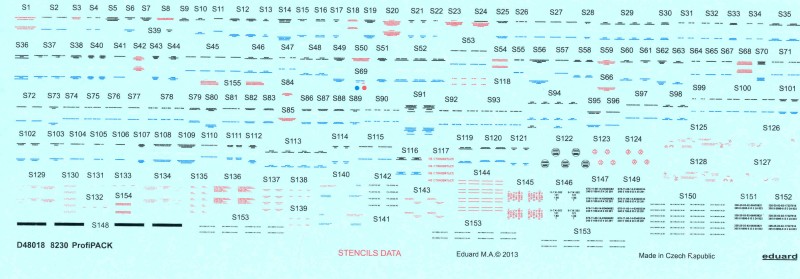
The instructions are typical for an Eduard ProfiPack kit, an A4 format booklet, in this case 20 pages long, stapled at the spine and printed on glossy paper in color. It is complete with history, icon chart, parts map and paint chart with Gunze numbers. Ten pages contain the assembly diagrams which uses color for high lighting areas and includes a weapons load out chart. One page of masking instructions, five pages with color profiles for the markings included and two pages of diagrams calling out all of the stencil locations, whew ! The assembly diagrams are a nice size and clear.
After Market Goodies
Probably not needed but I couldn't help myself. First up is a Barricuda Cast (BR48294) radome and adapter ring. Perfectly cast as is the norm from these guys.
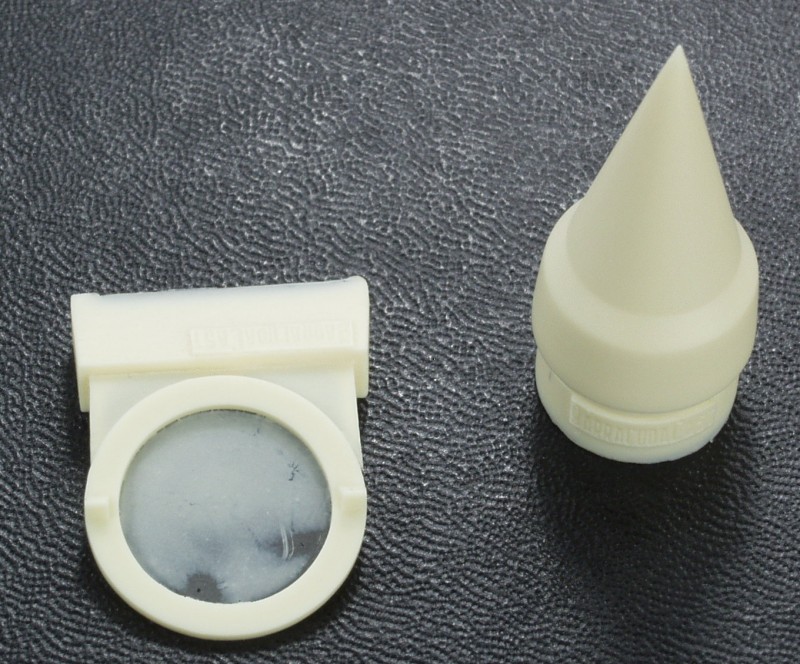
Next is a set from Eduard under their Brassin label (648110) one piece wheels so no seam to deal with and nicely done separate wheel hubs a replacement yoke for the nose wheel some photo etch brake lines and other details to dress up the gear and a set of masks for painting the wheels.
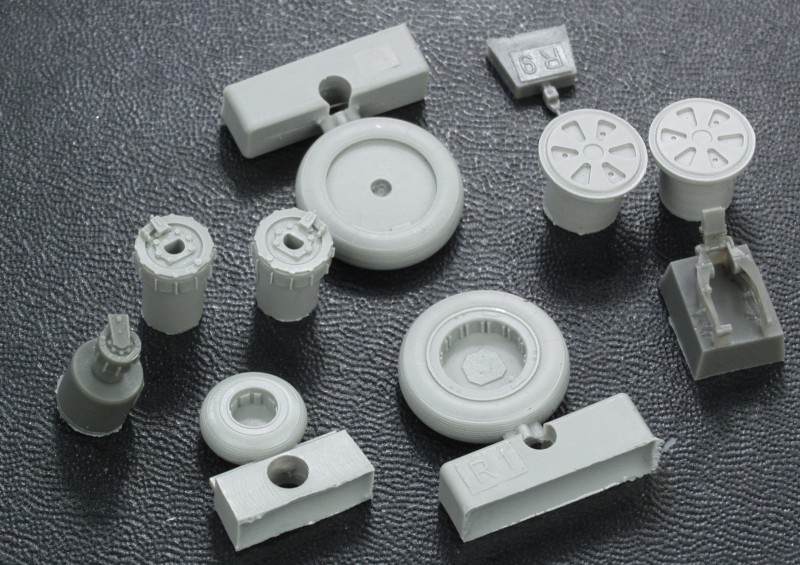
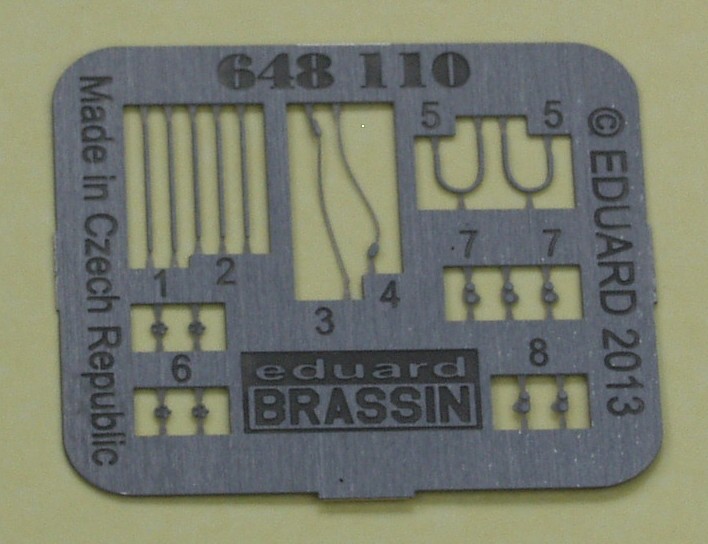
Conclusions
All in all a very nicely done and detailed kit that shows that Eduard is at the top of their game. I can't speak for the accuracy of the kit and with so many produced a good reference for the aircraft you want to build might be in order. In spite of the detail level the parts count isn't so high that I think most new modelers could handle this one with care and patience. Recommended !
Links to kit build or reviews
An in box review can be found here
References
Encyclopedia of Russian Aircraft by Bill Gunston
Back to the Russians are Coming
page